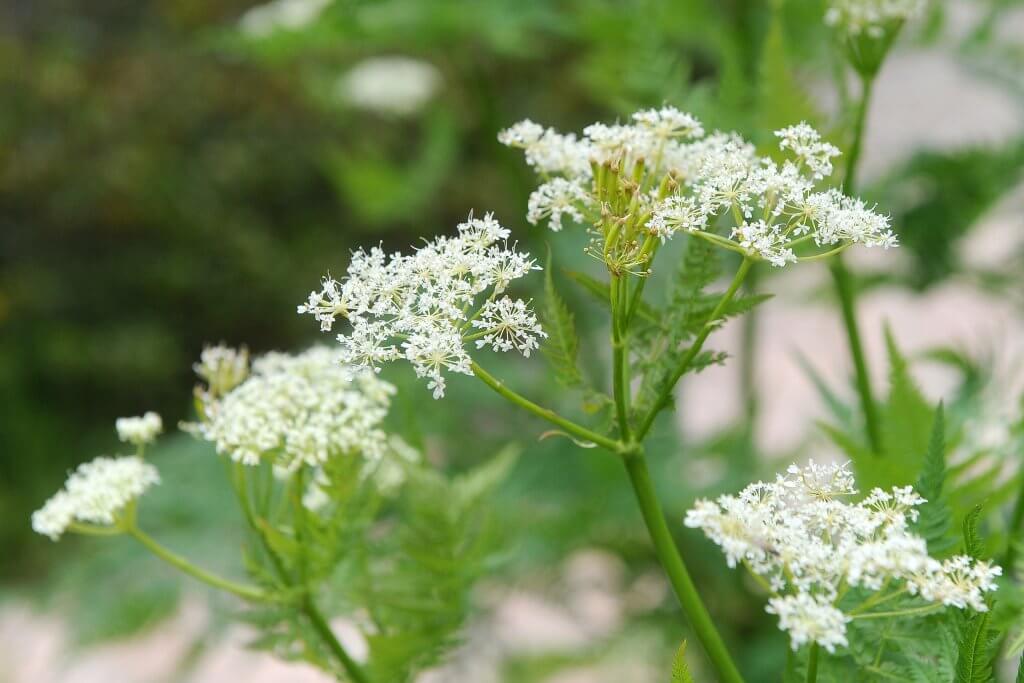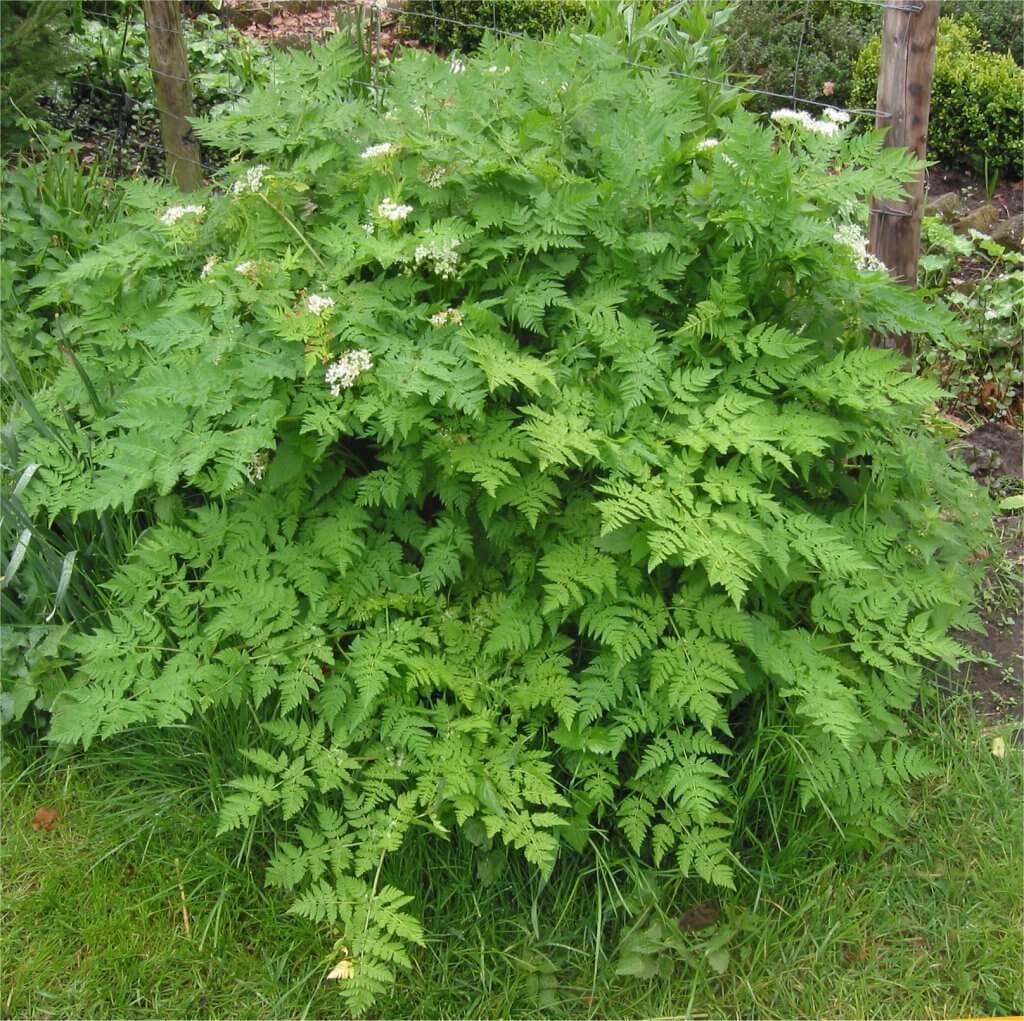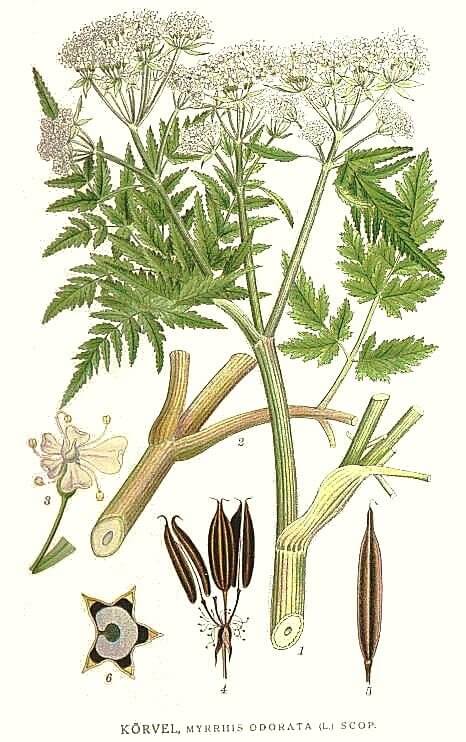Cicely (Myrrhis odorata) is a herbaceous perennial plant, once native to the mountainsides and woodlands of Southern Europe. The plant has since spread, and you will now find it growing in woodlands, roadsides and along streams in the majority of Europe. It is currently quite abundant in Northern Europe, particularly Scotland. You may know Cicely from a variety of other names including myrrh, sweet cicely, shepherds needle, garden myrrh and sweet chervil.
The plant is particularly tall, reaching a height of about 2m in favorable conditions. You will notice that the leaves slightly resemble those from a fern. Small feathery leaves are divided across a number of long stems. The flowers form large clusters of white at top of the plant. When you rub the leaves between your fingers you will smell a strong aniseed aroma. Nectar production is high so cicely is fantastic at attracting butterflies and pollinators like bees.

Cultivation and History of Cicley
You can easily grow cicely from seed in well drained and nutrient rich soils. It is a particularly hardy plant but it will thrive best in certain conditions. Plant cicely in an area that receives partial sun, so as not to dry out the leaves too much in the full summer sun. Cicley does not require much care or attention apart from the occasionally watering to keep the soil moist in summer.
Place the seeds directly into the garden in the fall. After several weeks of cold weather over winter, the seeds will start to germinate and will appear in spring. It is possible to plant seeds in spring, however they will need to undergo a period of stratification in the fridge. You can also divide mature plants in spring or fall to increase your plant quantity. Cicely can spread quite rapidly as it is self seeding, so consider keeping it within a container if you wish to limit its spread.

Toxicity
Cicely is considered safe to consume, however its effects have not been fully researched. If you are pregnant or breast feeding it is best to avoid consuming cicely as its effects on the body are not fully known.
Uses
Culinary uses of Cicley
Each part of the cicely plant is edible, from roots to flowers. You can cook the leaves like you would for spinach, or alternatively you can add fresh leaves into salads and blend them into soups and sauces. The stalks and stems are quite similar to celery, and many people will choose to eat them raw, chopped in salads or dipped within sauces and yoghurts as a healthy snack. You can also dry the leaves to use at a later date as they retain their flavor very well.
Due to its similar taste to caraway, fennel and anise, it is possible to use cicely as an alternative to these herbs in many recipes.
Medicinal uses of Cicley
From asthma and congestion to digestion issues and gout, cicely was believed to relieve the symptoms of many illnesses. Folk medicines used each piece of the plant for a number of remedies. The roots are antiseptic and could be used in treatment of bites from animals and minor cuts. The essential oil found in cicely, anethole, acts as an anti-inflammatory which helps to soothe digestive complaints.

Did you know…
Cicely can be used in recipes as a replacement for sugar due to its sweet taste. Many herbalists believe it should garner more attention for this low calorie alternative. It has the potential to reduce sugar cravings if you are dieting or diabetic.
Conclusion
In conclusion, the fern like foliage and delicate clusters of flowers make cicely a very attractive plant to have within your garden. The potential benefit of satisfying a craving for sweet foods makes cicely a very interesting herb. More research will need to be completed before its full value can be uncovered.
—————Written by Hannah Sweet
Hannah is a freelance writer and graphic designer from the UK. With a penchant for travelling, photography and all things botanical, she enjoys writing about a wealth of topics and issues, from conservation and slow living, to design and travel. Learn more about her writing and design services at www.sweetmeanders.co
Many of our readers find that subscribing to Eat The Planet is the best way to make sure they don't miss any of our valuable information about wild edibles.
See our privacy policy for more information about ads on this site






